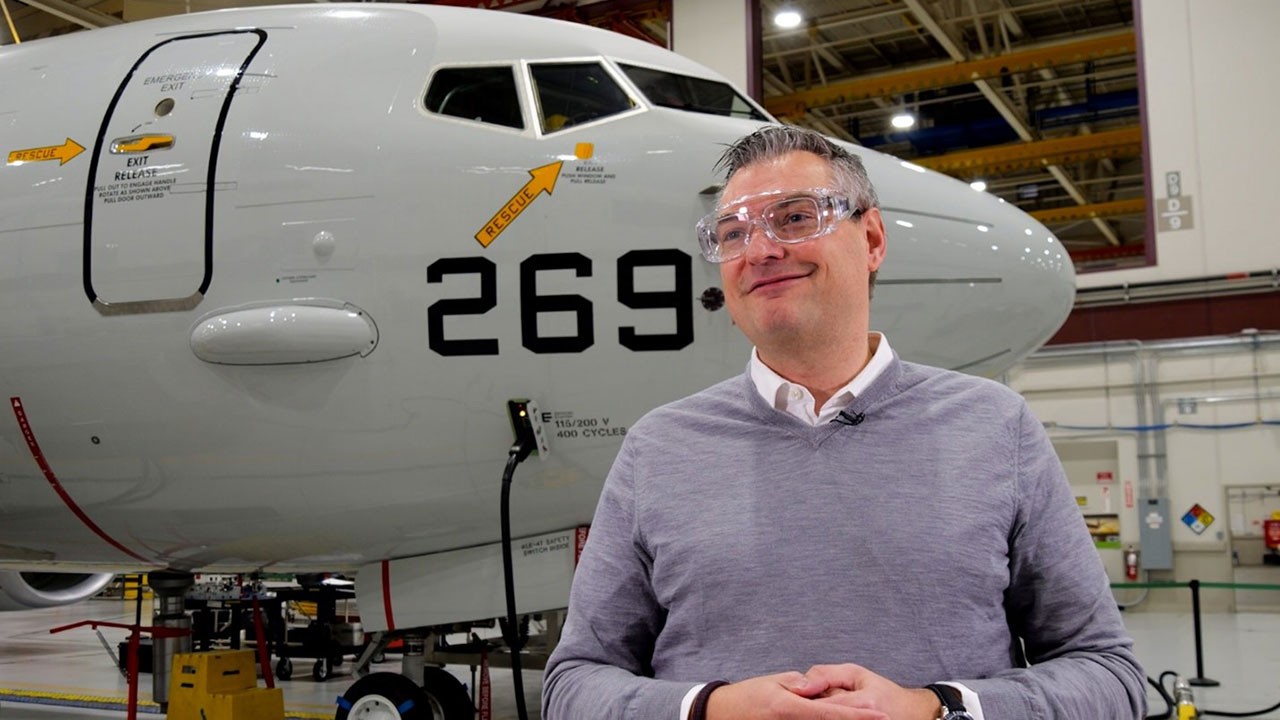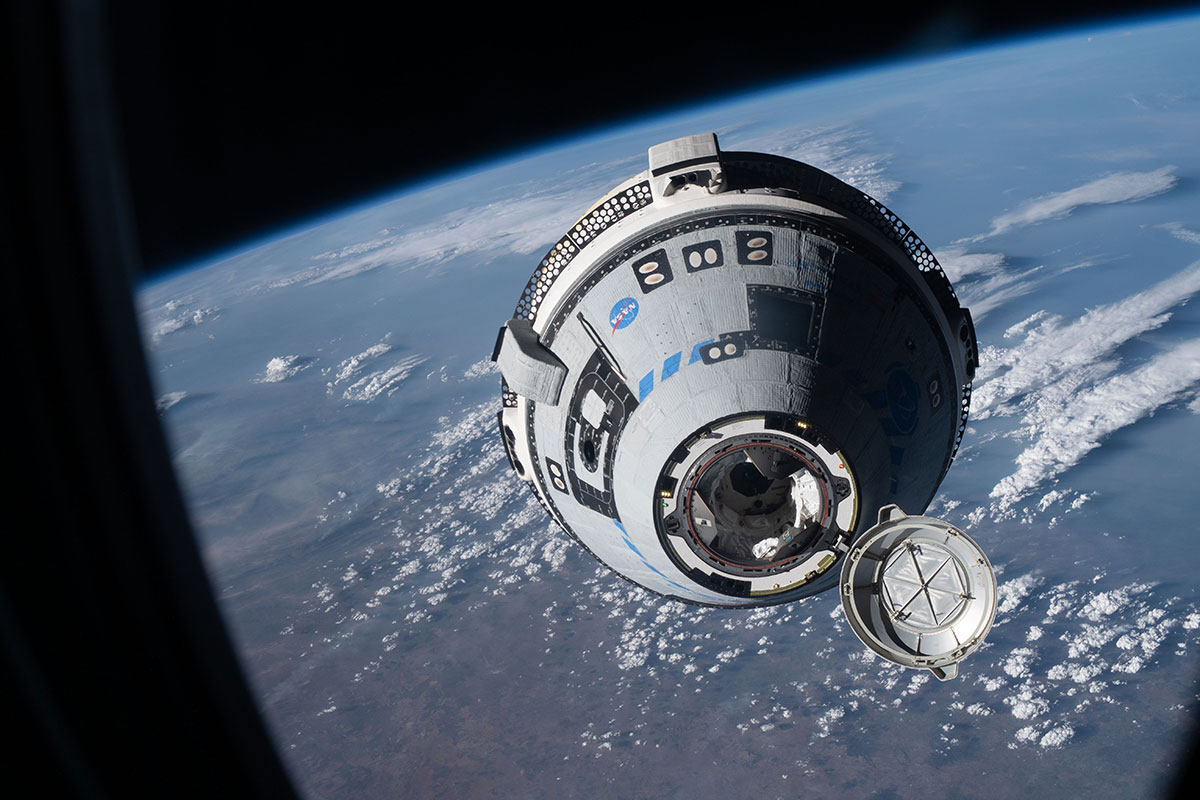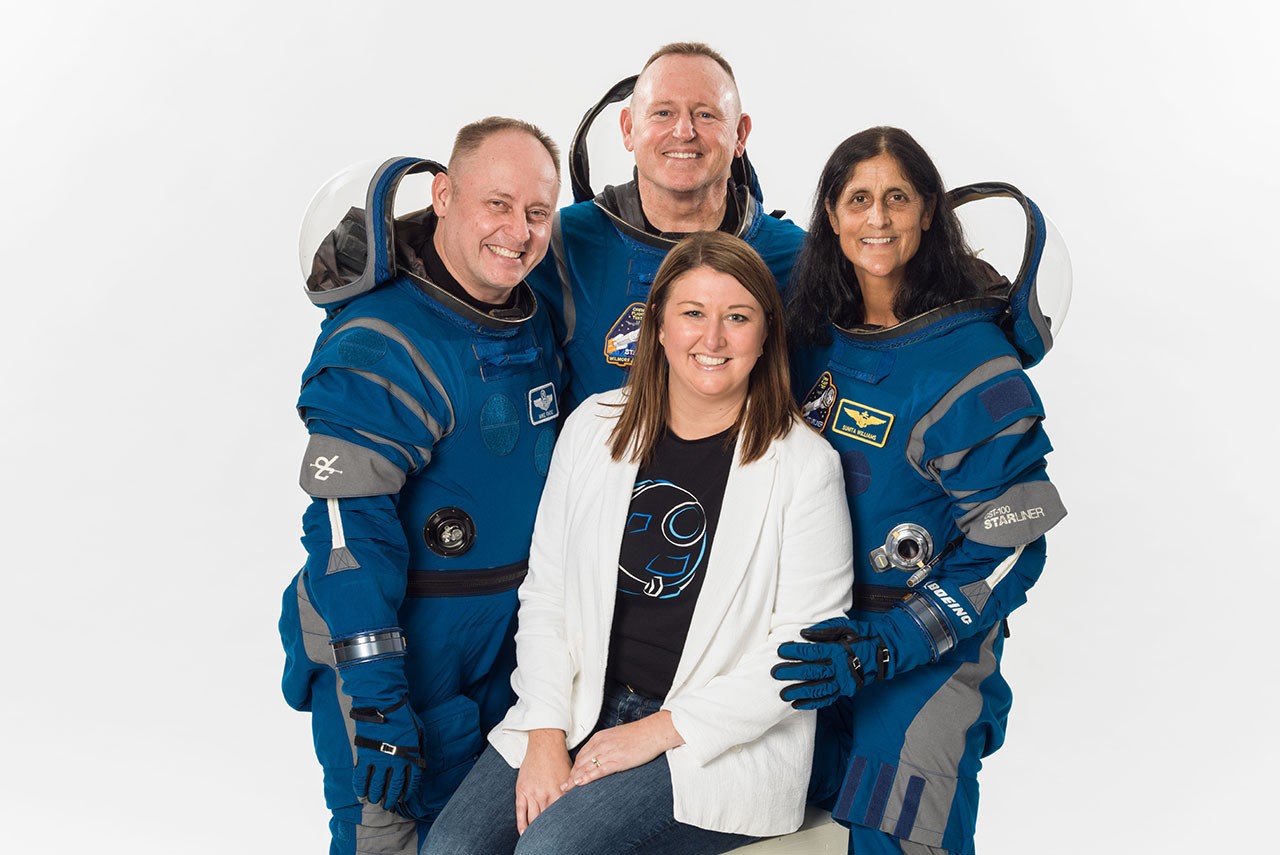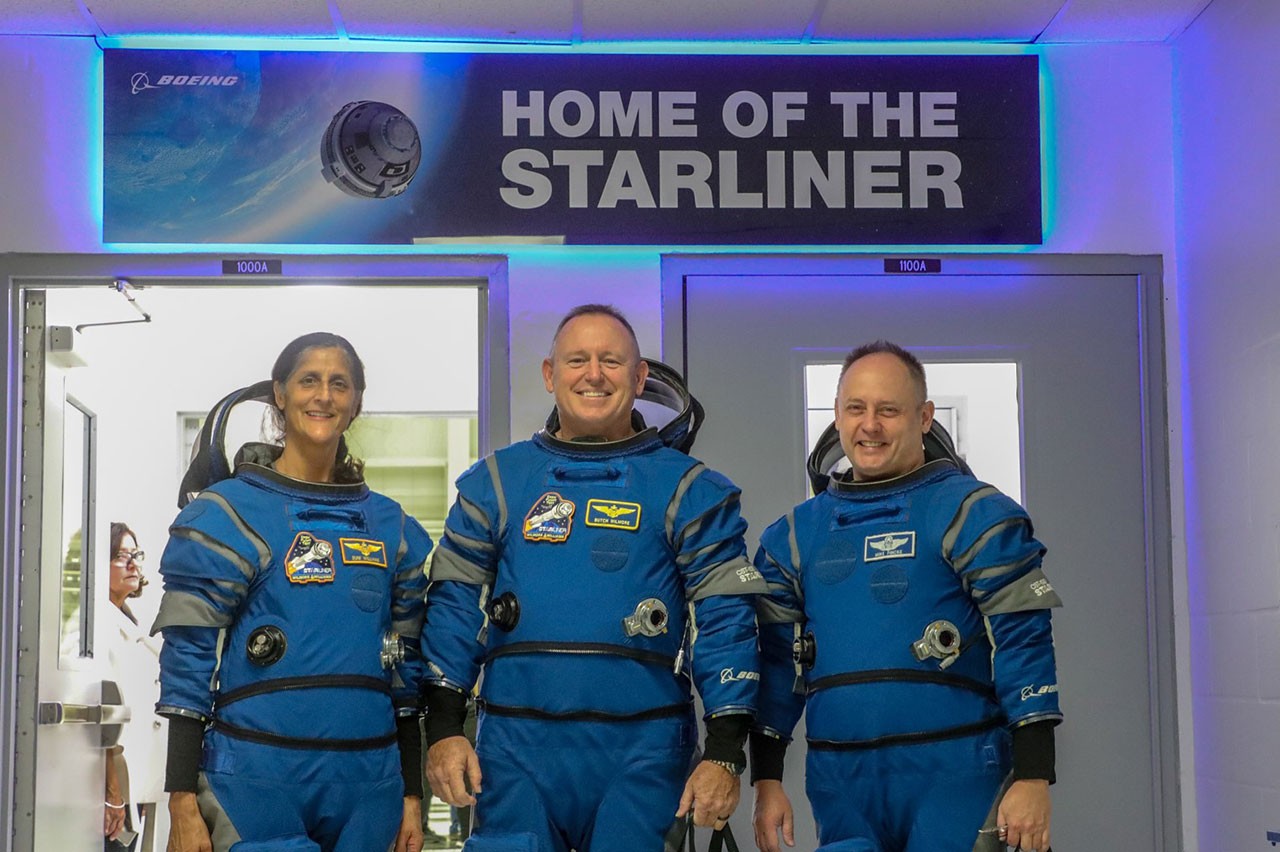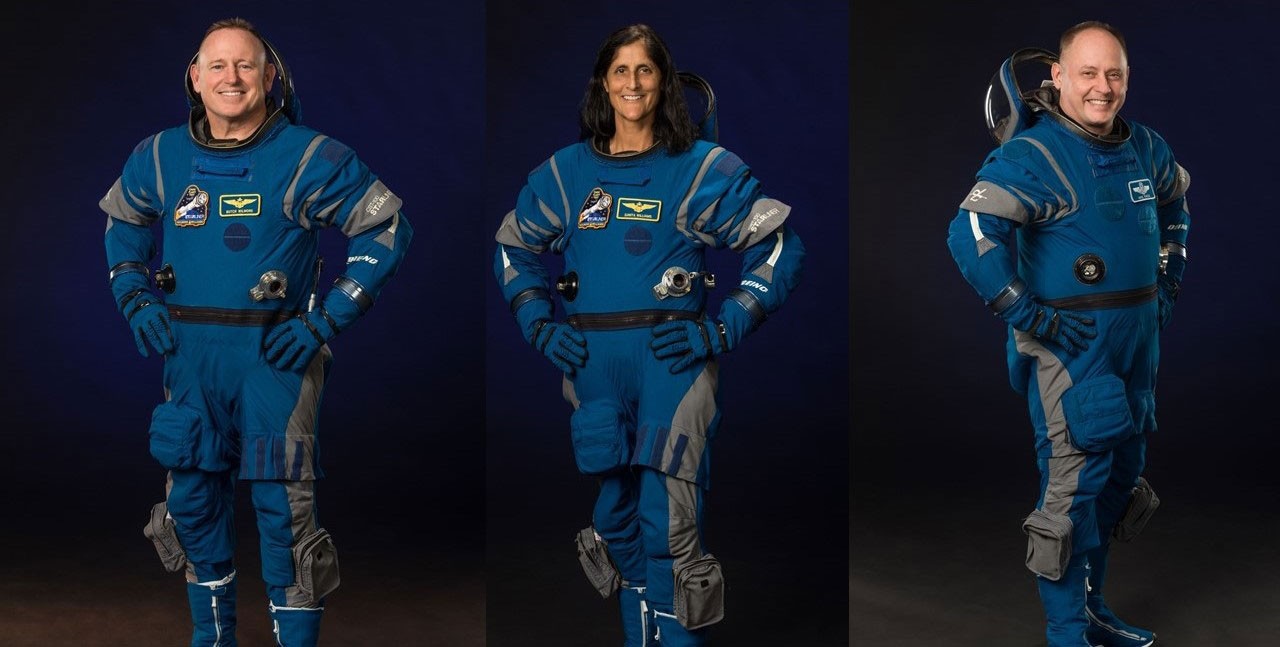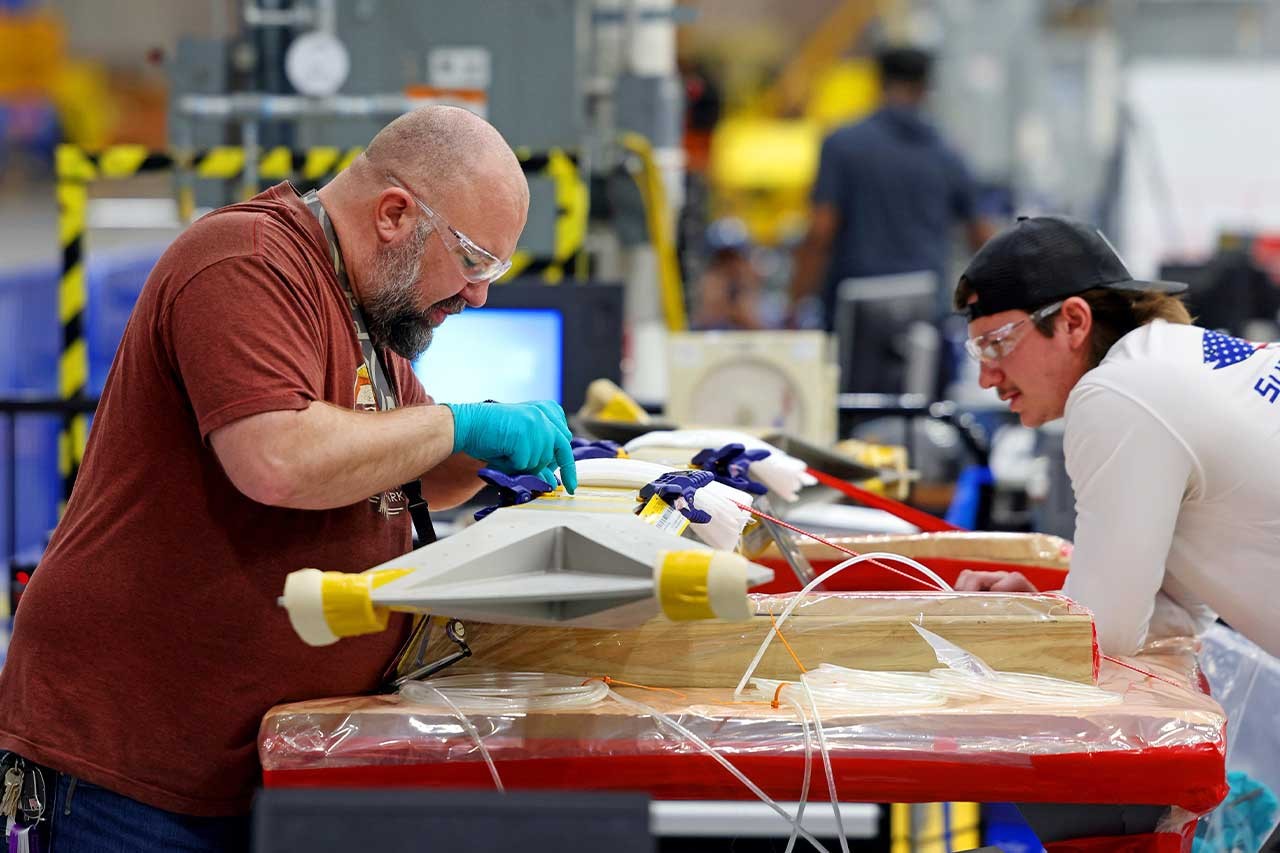Working model of space station teaches STEM
Boeing volunteers showcase project to inspire students in science, technology, engineering and math.
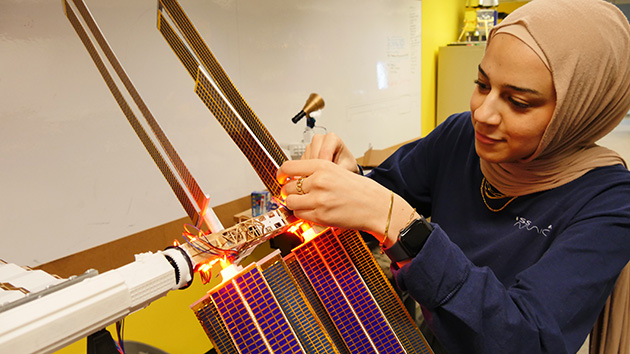 Boeing engineer Aya Abushmeis works on the ISS MIMIC model as the team adds more elements to the model reflecting recent new solar arrays added to the real ISS. Boeing/Steven Siceloff photo
Boeing engineer Aya Abushmeis works on the ISS MIMIC model as the team adds more elements to the model reflecting recent new solar arrays added to the real ISS. Boeing/Steven Siceloff photo
A scale model of the International Space Station (ISS) that moves in tandem with the actual orbiting laboratory is bridging the distance between school students and Boeing engineers in Houston through a project known as ISS MIMIC, a model designed to imitate the motions of the station.
Using precise telemetry data from the ISS that is available publicly, the MIMIC team — all Boeing volunteers — designed a working model that rotates its solar arrays just as the real ISS does. The model also includes lighting features to highlight space station mechanisms for audiences that do not have much exposure to the in-depth engineering knowledge Boeing applies every day to operate the ISS for NASA as the orbiting lab revolves around Earth 16 times a day.
After showing that model to thousands of people during education events, the team is now helping area organizations including libraries gather students to build their own versions. With the engineers’ guidance, the students learn and execute production phases ranging from manufacturing 3D-printed module models to assembling them and running wiring correctly throughout the model. They even learn the integration and testing processes along the way to complete a successful build. The plans also are open-sourced, meaning they are available publicly.
“The last day of the build, when we bring down the live telemetry, these students who never soldered, never held a 3D-printed part have done all of that and they see what it looks like to put in that work and be successful,” said Bryan Murphy, who helps lead the MIMIC team.
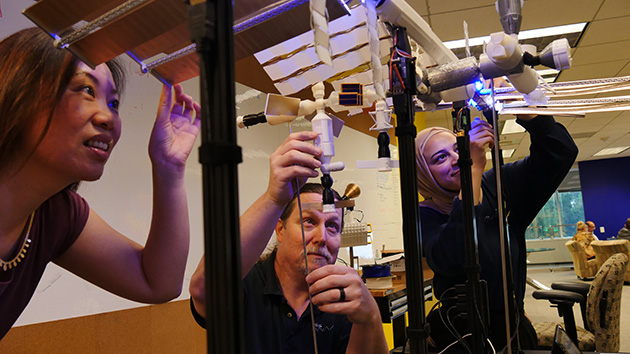 Working inside the Innovation Cell at Boeing’s Houston site, engineers Chen Deng (from left), Craig Stanton and Aya Abushmeis put the finishing touches on the ISS MIMIC model. Boeing/Steven Siceloff photo
Working inside the Innovation Cell at Boeing’s Houston site, engineers Chen Deng (from left), Craig Stanton and Aya Abushmeis put the finishing touches on the ISS MIMIC model. Boeing/Steven Siceloff photo
Like others on his team, Murphy has spent much of his engineering career supporting the work that goes into analyzing the myriad systems and structures of the ISS along with the processes used to keep the orbiting laboratory and its crew of seven safe, efficient and effective.
In the case of the students, none were yet born when the first crew moved into the ISS on Nov. 1, 2000.
The team and its model have been a hit in the education community, Murphy said, and have garnered attention from teachers to social media influencers who focus on science, technology, engineering and mathematics (STEM) outreach efforts.
For Murphy, the effort is about clearing hurdles early to show students how they can play a role in future space construction.
“It’s a small step for students to go from this to ‘I can help build spacecraft,’” Murphy said.
By Steven Siceloff
